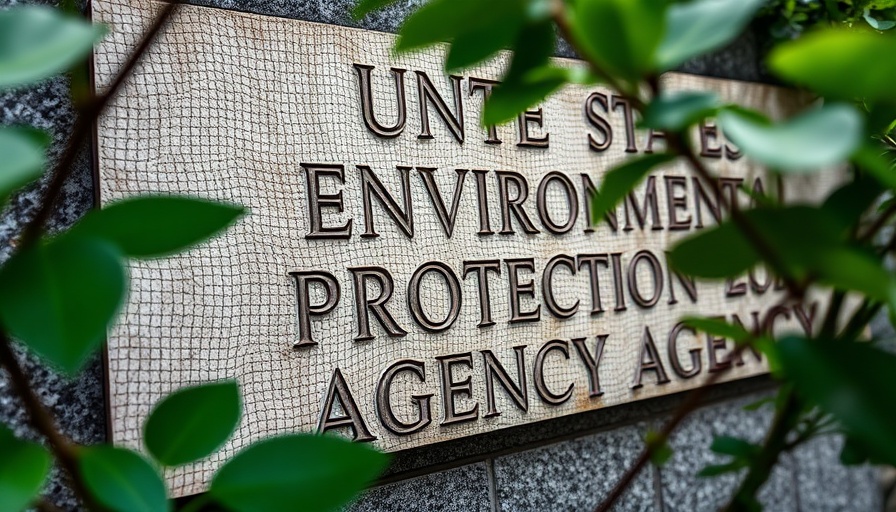
What the EPA's Reorganization Means for Environmental Health
In May 2025, the Environmental Protection Agency (EPA) announced a significant reorganization that appears poised to dismantle its primary division focused on vital scientific research regarding the health risks of toxic chemicals. This action has raised alarm not only among scientists but also within various industries relying on the agency’s objective assessments for regulatory compliance. The move could have far-reaching implications for public health and environmental safety.
The Role of the Integrated Risk Information System Program (IRIS)
The Integrated Risk Information System Program (IRIS), created in the mid-1980s, has been a cornerstone of the EPA’s efforts to safeguard human health from hazardous chemicals. By collating and analyzing global research, IRIS provides independent reviews that help shape regulations on chemical exposures. Experts note that the program has been notably free from external pressures historically exerted by the chemical industry and political forces, granting it the independence necessary for rigorous scientific inquiry.
Concerns Over the Future of Chemical Risk Assessments
This reorganization is seen as part of a broader, ongoing effort to restructure the EPA in ways that could jeopardize the integrity of chemical risk assessments. “The agenda seems to be fundamentally changing how the agency approaches science-based decision-making,” stated Jennifer Orme-Zavaleta, a former principal deputy assistant administrator at the EPA. As the agency shifts approximately 500 researchers into new positions, clarity around the future of IRIS remains scant.
The Impact of Regrettable Research Cuts
With the dismantling of the IRIS program, critics warn that the scientific evaluations crucial for establishing chemical safety standards may be compromised. This shift reflects a troubling trend of prioritizing political agendas over robust scientific inquiry, which can ultimately lead to ineffective regulations and increased health risks for the public.
A Call for Transparency and Scientific Integrity
The EPA’s spokesperson, Molly Vaseliou, asserted that the agency is moving swiftly through the reorganization process and will provide further details as they emerge. However, experts and advocates emphasize the need for transparency during this crucial transition. The credibility of health risk assessments relies heavily on scientific integrity, which may be undermined without proper oversight of the restructured agency.
What Lies Ahead for the EPA and Chemical Research?
As stakeholders from various sectors await further developments, the reorganization poses questions about how efficiently the EPA can continue to safeguard public health without a dedicated program like IRIS. The implications for state policy and international regulations loom large, as IRIS has historically been instrumental in guiding decision-making beyond federal mandates.
In conclusion, the fate of the IRIS program hangs in the balance amid EPA's restructuring plans. Executives and decision-makers across industries must remain vigilant and advocate for the preservation of independent scientific assessment as a non-negotiable element of public policy. The potential dismantling of this crucial program should serve as a wake-up call about the vulnerabilities inherent in the current regulatory landscape. Stakeholders are encouraged to engage in dialogues around the importance of maintaining rigorous research to ensure informed decisions on chemical safety.
 Add Row
Add Row  Add
Add 




Write A Comment